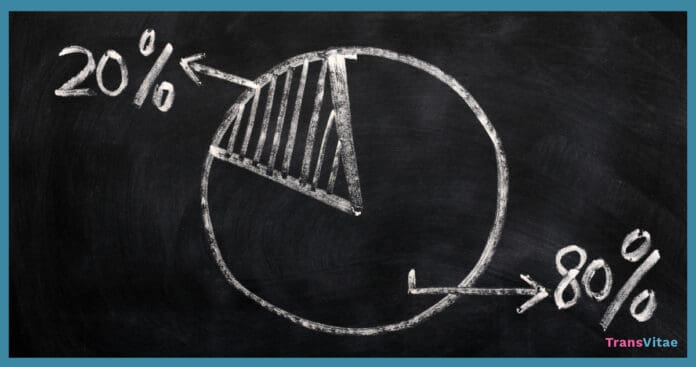Spring has finally arrived, and with it comes the age-old ritual of shedding not just our winter coats, but often our comfort foods too. For many, especially in the transgender community, spring can also bring renewed motivation to feel better in our bodies. Whether it’s for health, confidence, gender euphoria, or just to fit into that outfit you love, there’s nothing wrong with wanting to make changes. But how we go about those changes matters.
Let’s be honest: dieting sucks when it becomes a chore. Food isn’t just fuel; it’s joy. It’s culture. It’s birthday cake and late-night fries with friends. It’s grandma’s soup and bubble tea and holiday dinners and brunch with your chosen family. Food should nourish more than just your body. It should nourish your spirit.
As a former bodybuilder, I know the trap of thinking food is just macros and meals are just checkboxes on a spreadsheet. I’ve done the chicken-and-rice routine. I’ve eaten the same three vegetables for months. I’ve turned down cake at parties and brought Tupperware to weddings. I don’t regret those choices—they were part of a phase in my life. But now that I’m not prepping for a stage, I’ve found a more sustainable way to live. That’s where the 80/20 rule comes in.
What Is the 80/20 Rule?
Originally developed as a business and marketing principle (called the Pareto Principle), the 80/20 rule in this context means 80% of the time, you eat in a way that supports your health goals. The other 20%? That’s your flex space. That’s dessert. That’s the impromptu pizza night. That’s saying yes to your best friend’s birthday dinner without guilt.
This isn’t about ‘cheating.’ It’s about balance. It’s about sustainability. It’s about joy.
Why This Matters More for Transgender People
Eating disorders affect the transgender community at significantly higher rates than the general population. The pressure to “pass,” to change our bodies quickly, to conform to societal expectations of beauty or gender norms, can push us into dangerous territory. When we combine this with dysphoria, trauma, and medical gatekeeping, it can lead to a dangerous situation.
We deserve better.
We deserve to eat in a way that honors our bodies, our needs, and our mental health. We deserve to unlearn the shame we’ve been taught. We deserve to have a relationship with food that is healing, not harmful.
That’s why the 80/20 rule is so powerful. It makes room for real life. It makes room for joy. It lowers the stakes. When every meal isn’t life or death, when you’re not constantly on the edge of falling off the wagon, you start to build trust with yourself again.
The Myth of Perfect Eating
There is no such thing as the perfect diet. Let me say that again for the folks in the back: There is no such thing as the perfect diet.
No one eats 100% clean all the time—not even professional athletes. And let me tell you from experience, those people often feel miserable. Living on egg whites and sadness is not a badge of honor. It’s a recipe for burnout.
The goal isn’t to be perfect. The goal is to feel good.
Feeling good might mean lowering your blood pressure, having more energy, or feeling more aligned with how you want to present. And yeah, feeling good might also mean having an ice cream cone with your niece and not spiraling into guilt afterward.
How to Use the 80/20 Rule in Real Life
Here’s the thing: the 80/20 rule is a framework, not a formula. You don’t need to do math at every meal. You don’t need to count calories unless that helps you. This is about patterns, not perfection.
- 80% of the time: Aim for meals that make you feel energized and satisfied. Think whole foods, proteins, colorful veggies, healthy fats, and grains that work for your body.
- 20% of the time: Eat what makes your heart happy, even if it’s not “healthy” by diet culture standards.
That might mean:
- Eating nutrient-dense meals most weekdays and enjoying takeout on Friday nights.
- Having a nourishing breakfast and lunch, then indulging in your favorite dessert after dinner.
- Choosing balance over restriction.
What matters is that you’re building a lifestyle you can stick to. Something that lets you breathe. Something that makes room for both kale and cookies.
Words of Caution: Don’t Weaponize the Rule
This rule isn’t a license to punish yourself for the 20%. It’s not about “earning” food or “making up for it later.” If you find yourself obsessing over the numbers, it might be time to talk to a therapist or a dietitian who understands trauma-informed care and transgender experiences.
The goal is flexibility, not another way to shame yourself.
The Bottom Line
And hey—if you’re not dieting? That’s valid too. You don’t have to want to lose weight. You don’t have to be on a journey. You’re allowed to just exist. You’re allowed to just eat.
But if you are trying to make changes—to feel stronger, more confident, more yourself—then let this be your reminder: you don’t have to be miserable to get there. You don’t have to give up joy. You just need a rhythm that works for your life.
The 80/20 rule gave me permission to enjoy food again. It helped me step away from all-or-nothing thinking and toward a life that feels full—of flavor, of peace, of pride. And I hope it helps you too.
So here’s to spring. Here’s to sunshine, to fresh starts, and yes—to dessert. Because you deserve to feel good, inside and out.
If you or someone you love is struggling with disordered eating, you are not alone. Resources are available, and help is possible.
Stay nourished. Stay kind. Stay you.


